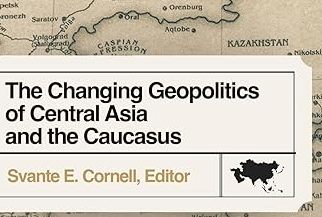INDIA FAILS TO GAIN A MILITARY FOOTHOLD IN TAJIKISTAN
By Roman Muzalevsky (2/2/2011 issue of the CACI Analyst)
For almost a decade, India has been actively yet unsuccessfully seeking to establish a military foothold in Tajikistan, where it helped renovate the Ayni air base. The facility has long been on the radar screens of many powers, including the U.S.
TURKMENISTAN-AFGHANISTAN-PAKISTAN-INDIA GAS PIPELINE GETS OFFICIAL FOUR-WAY GO-AHEAD
By Robert M. Cutler (1/19/2011 issue of the CACI Analyst)
After over fifteen years on the drawing-boards, the Turkmenistan-Afghanistan-Pakistan-India (TAPI) gas pipeline project was approved by the four countries’ leaders, meeting in Ashgabat in December. While the intergovernmental agreement naturally depends upon follow-on negotiations to be realized, it is anticipated that sales and purchase agreements will be signed at another four-way meeting that could take place as early as April 2011. The success of such a project would continue diversification of Turkmenistan’s gas export directions, provide needed resources to gas-hungry Pakistan and India, and not least give Afghanistan a keystone development project upon which to build economic reconstruction.
DAGESTAN: FUTURE LEADERSHIP PERMUTATIONS AND OLIGARCH SULEIMAN KERIMOV
By Kevin Daniel Leahy (1/19/2011 issue of the CACI Analyst)
The leaders of the various ethno-republics in the Northern Caucasus rely on different personalities to represent their political interests at the federal level. Presidential aides Sergei Naryshkin and Vladislav Surkov represent the leaders of Ingushetia and Chechnya respectively. Meanwhile, the embattled leader of Dagestan, Magomedsalam Magomedov, is represented by Suleiman Kerimov, a billionaire oligarch who represents Dagestan in Russia’s upper house of parliament.
KAZAKHSTAN’S URANIUM INDUSTRY AND NUCLEAR NONPROLIFERATION
By Gregory Gleason (1/19/2011 issue of the CACI Analyst)
The opening of the International Uranium Enrichment Center in Angarsk, Russia in early December 2010 was a milestone in Kazakhstan’s efforts to pursue a parallel policy of promoting peaceful nuclear energy while opposing nuclear arms proliferation. Kazakhstan’s state-controlled nuclear complex, Kazatomprom, was a co-founder of the fuel bank concept along with Russia. Kazatomprom is likely to be a major beneficiary of the IAEA and western sponsored nuclear fuel bank idea, given that Kazatomprom has grown in just over a decade from its beginnings as a disorganized collection of inefficient and unprofitable Soviet-era mines and factories to become the world’s largest producer of uranium ore for nuclear power reactors.



 Silk Road Paper S. Frederick Starr,
Silk Road Paper S. Frederick Starr,  Book Svante E. Cornell, ed., "
Book Svante E. Cornell, ed., "